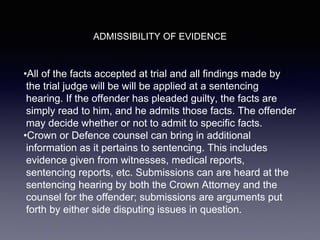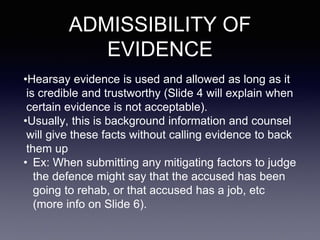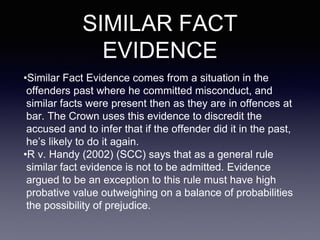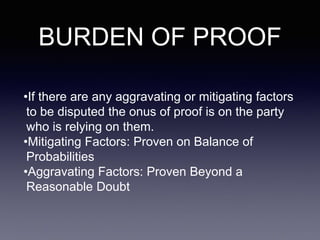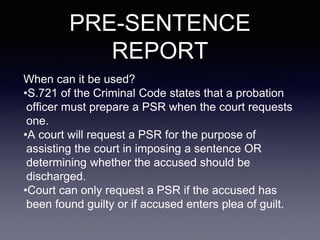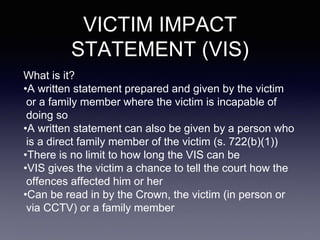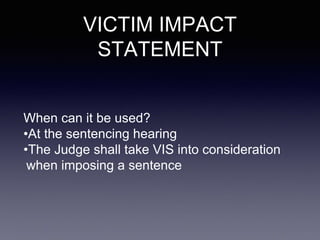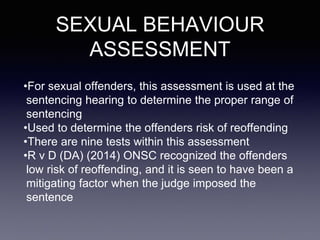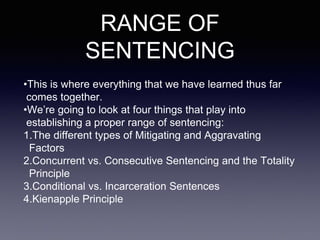The document summarizes key information about evidence admissibility and sentencing considerations in criminal proceedings. It discusses:
- What evidence from the trial and additional information can be presented at sentencing.
- Standards for admitting hearsay, similar fact, medical reports and victim impact statements.
- Factors considered in pre-sentence reports and sexual behaviour assessments.
- The offender's right to speak and how mitigating/aggravating factors, concurrent/consecutive sentences, and conditional/incarceration sentences determine the proper sentencing range.

